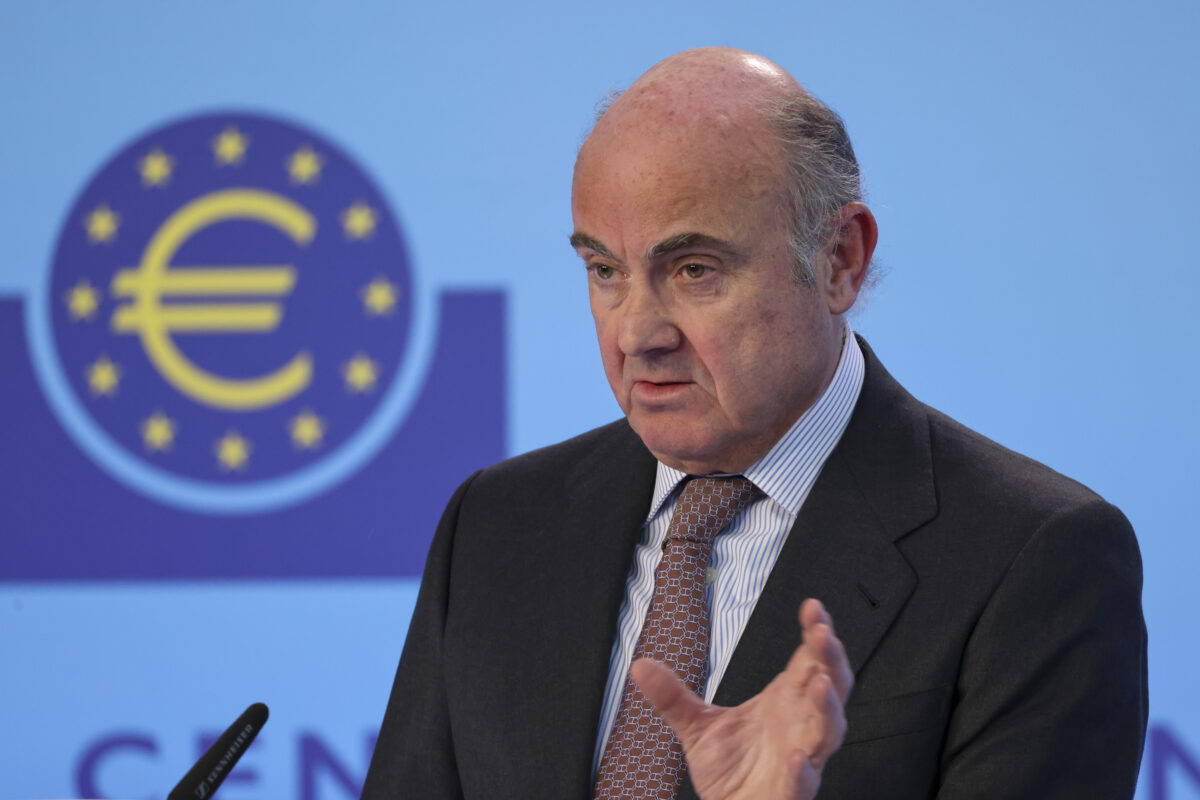Von Claudio Kummerfeld
Der aktuell von EZB-Vize Vitor Constancio veröffentlichte Text nährt bei der Detaildurchsicht in der Tat die Annahme, die EZB könnte ihre mtl. Anleihekäufe von 60 Milliarden Euro aufstocken und/oder die Laufzeit über September 2016 hinaus verlängern. Warum? Erstmal hier ein einjähriger Rückblick von Vitor Constancio, wie es zum Anleihekaufprogramm der EZB ab März 2015 kam. Zitat:
„The economy was still in recession for most of 2013 and annual GDP growth figures only became positive in late 2013, leaving significant economic slack. A weak recovery took hold over the course of 2014 with growth rates around and below 1%, but the outlook deteriorated again during the autumn, with inflation turning negative later that year. The 2015 GDP growth forecasts for the euro area in the ECB staff macroeconomic projections had declined from 1.7% in June to 1% by December. At the same time, and in contrast to previous developments, weak growth was accompanied by a prolonged period of declining inflation, which went from 3% at the end of 2011 to -0.2% in December 2014. Credit supply conditions in the euro area remained tight, despite signs of improvement, as indicated by the responses to bank lending surveys. These developments were particularly worrying because they were accompanied by a decline in longer-term inflation expectations.
This combination of very low growth in both output and prices was clearly suggestive of a shortfall in aggregate demand and called for further easing of the monetary policy stance. Key ECB interest rates reached their lower bound – with a negative rate for the deposit facility – and further unconventional measures were deployed, drawing in part on the experience of other central banks. Besides lowering key interest rates in June and September 2014, which took the deposit facility rate into negative territory, the Governing Council has implemented the following set of unconventional monetary policy measures over the past year.“
Man kann also sagen „it´s all about Inflation“. Der EZB grauste ein Japan-Szenario, der Absturz der Eurozone in die Deflation. Das musste man verhindern. Und jetzt, durch die extrem fallenden Ölpreise der letzten 7 Wochen wird das zart aufgepäppelte Pflänzchen der EZB, die Mini-Inflation in der Eurozone, dadurch kaputt gemacht. Was ist die logische Schlussfolgerung für einen Notenbanker? Einfach noch mehr Geld drucken, noch mehr Anleihen aufkaufen. Hier noch ein Hinweis, wie viel Angst die EZB vor dem Scheitern einer aufkeimenden Inflation hat. Zitat:
„The ongoing deterioration of long-term inflation expectations was a major factor in the extension of our purchase programme in January this year. Figure 6 shows the evolution of these expectations over the past decade and since 2012. Euro area longer-term inflation expectations (both market-based and, to a lesser extent, survey-based) had been falling since early 2013, reaching an all-time low by early 2015.“

Die untere dunkelblaue Linie zeigt die Inflationserwartung für die Eurozone. Es geht abwärts.

Ein Vergleich der Notenbank-Bilanzen. Japan ist einsame Spitze. Die dortige Notenbank hat ihre Bilanz mit einer gigantischen Gelddruckerei auf 70% des BIP aufgebläht.
Constancio´s Fazit
Vitor Constancio´s Endfazit, wie zu erwarten: Alles im Griff, alles läuft nach Plan, das Anleihekaufprogramm der EZB zeigt wie erwartet seine Wirkung auf die Finanzbranche usw. Daran kann man mehr als zweifeln. Von einem enormen Anstieg der Kreditversorgung des europäischen Mittelstands in den letzten sechs Monaten ist weit und breit nichts zu sehen. Aber im EZB-Tower in Frankfurt kann man die Statistiken eben so deuten, wie man sie deuten will. Am Ende schreibt er aber eben den Satz, der die Verzweiflung deutlich macht, nämlich dass man bereit stehe mit allen zur Verfügung stehenden Maßnahmen einzugreifen – ein verdecktes Eingeständnis, dass es eben nicht nach Plan läuft. Zitat von EZB-Vize Constancio:
„Our new non-standard measures have successfully improved financial and credit conditions in the euro area and contributed to supporting the normalisation of price stability, as well as the ongoing economic recovery. I am confident that full implementation of the private and public sector asset purchase programmes, as announced, will lead to a sustained return of inflation rates towards levels consistent with our definition of price stability, underpinning the firm anchoring of medium to long-term inflation expectations. As always, the Governing Council stands ready to use all the instruments available within its mandate to respond to any material change to the outlook for price stability.“
–
–
–
Quelle Text + Grafiken: EZB
Kommentare lesen und schreiben, hier klicken













Wir kommen dem Paradies immer näher.Ich habe mich um 180 Grad gedreht um auch dabei zu sein.Hatte ich früher immer gesagt:Ich konsumiere,also bin ich,habe ich das jetzt geändert in:Ich verweigere, soweit es geht jeglichen Konsum um Deflation zu erzeugen.Dieses clevere Verhalten bewirkt,dass mich die EZB-Nuttenbank mit Geld zuscheissen will.Da ich der Devise folge:Geld stinkt nicht,man darf nur nicht in der extremen Menge ersticken,finde ich das natürlich paradiesisch toll!Auf geht’s Mario,Stuhl marsch.